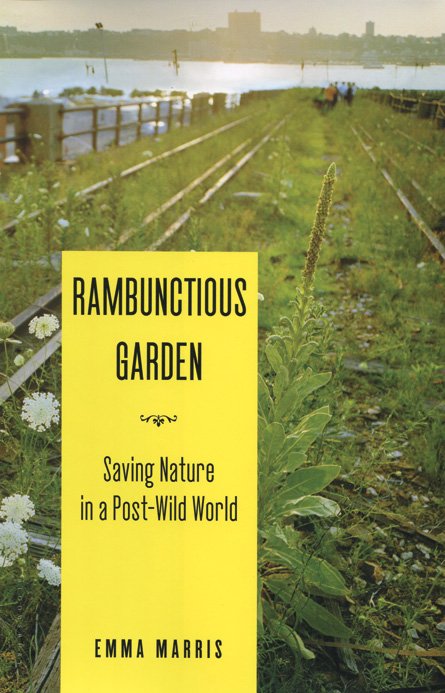Review of “Rambunctious Garden” by Emma Marris
Will Ross, July 6, 2017

Published in 2011, Emma Marris’ Rambunctious Garden: Saving Nature in a Post-Wild World makes a controversial contribution to the canon of environmental literature. Through a series of case studies, Marris sustains a critique of the way environmental scientists and historians have viewed humankind’s role in relation to nature and wilderness. In this slender 220-page book, the Oregon-based environmental writer addresses existing notions around conservation, questioning their foundation and feasability with a response that is both disturbing and optimistic.
Central to Marris’ argument is the need to overturn two centuries of englightenment logic about the distinction between that which is human-made, and that which is wild. Then the more quantative critique enters the argument: how does one measure the degree of “pristine”, the scale of wildness? This gives birth to an ontological distinction: wilderness is a human category, specifically placing nature in relationship to humans. Whereas from another perspective, wilderness pre-supposes the absolute absence of humanity from its habitat.

Instead, Marris calls for a revision of the conservationist dialogue, one that is now a pillar of the Antropocene viewpoint that has gathered momentum since her book was published. Indeed, to rely on empirical observation is to set forth on a path littered with flaws, the kind that cut the world into geometrical shapes through enlightened imperialism.
Taking a constructive approach, Marris proposes that intervention can help re-wilding by introducing proximity species to take on roles previously carried about by extinct or displaced populations. Assisted migration can take place for Marris, a point that sets her directly against classical conservationists. Since what is historical fidelity afterall, what range are we looking at?
In a fell-swoop denouncement of absolute wilderness in the Anthropocene, Marris successfully invigorates a hope for the world and those urban populations that grapple with the problem of climate change and no outlet for their own horticultural tendencies. Rather, wasted spaces can become habitat – the espousement of the tiny prairie in America’s cities.
Have a look out for “Rambunctious Garden” in your local bookstore, or via emmamarris.com